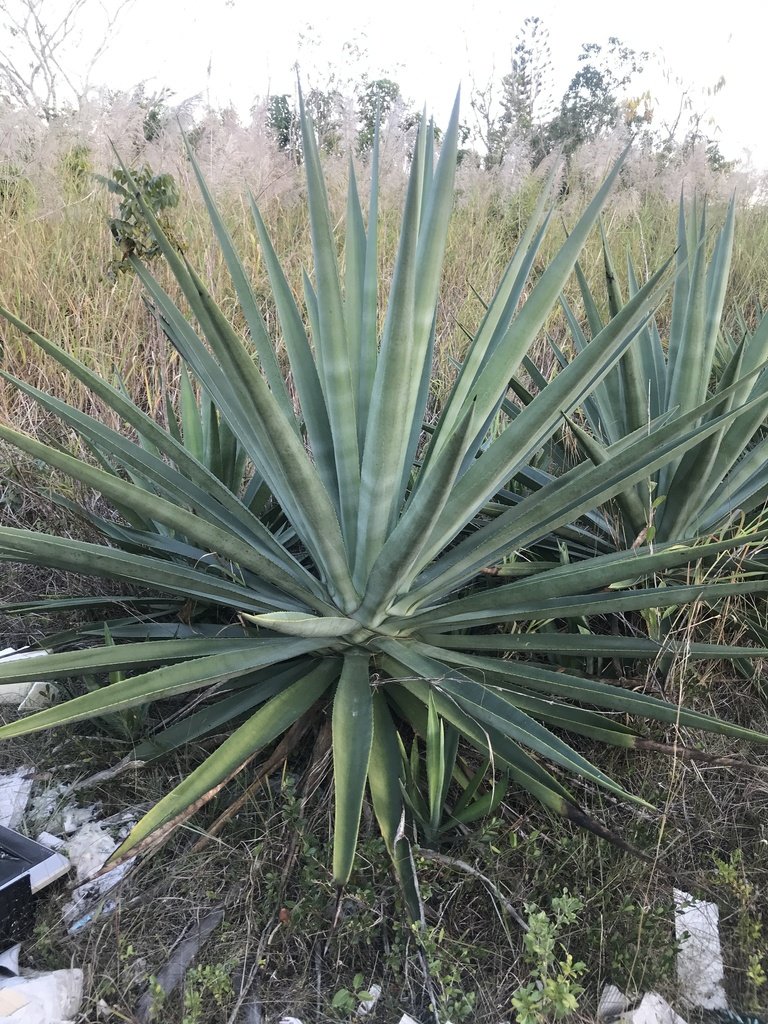Agave sisalana
Sisal Agave
This agave has long narrow leaves that are 4-6’ long. Plants sucker to form colonies. This species appears to be a sexually sterile clone that is widely cultivated in fibre plantations and could be of hybrid origin within the Agave vivipara-complex. Sisal is propagated using bulbils or suckers.
Plant in full to part sun, moderate to low water. Plants are damaged from temps below 28°F, and killed in the lower 20s °F.
This is a very important economic plant used to make sisal fiber, a stiff fiber used for rope and twine, and which has many other uses, including paper, cloth, footwear, hats, bags, carpets, geotextiles, and dartboards. It is also used as fibre reinforcements for composite fibreglass, rubber, and concrete products. Historically, sisal was used by the Aztecs and Mayans for fabric and paper. It spread to other parts of the world in the 19th century, with Brazil becoming the major producer.
This agave is also important in the production of mescals.
The genus Agave is derived from Greek mythology being the daughter of Cadmus, who supposedly founded the city of Thebes; it generally translates to mean “noble’. The species sisalana refers to the fiber-making importance of this taxon.
Howard Scott Gentry, an American botanist recognized as the world's leading authority on the agaves, hypothesized a Chiapas origin, on the strength of traditional local usage. Evidence of an indigenous cottage industry there suggests it as the original habitat location, possibly as a cross of Agave angustifolia and Agave kewensis. The species is now naturalized in other parts of Mexico, as well as in Spain, the Canary Islands, Cape Verde, Madagascar, Réunion, Seychelles, many parts of Africa, China, India, Pakistan, Nepal, Burma, Cambodia, Thailand, the Solomon Islands, Queensland, Fiji, Hawaii, Florida, Central America, Ecuador, and the West Indies.





